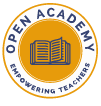The National Education Association put together a comprehensive list of the factors that lead to and contribute to the achievement gap (NEA.org, 2015). Its list was divided into two major sections. “Within Schools’ Control and Outside Schools’ Control” (NEA.org, 2015). The list describes the wide range of factors under sections like “School-wide factors’, Teachers and teaching factors, Students’ Background, Factors in the Local Community, Student-related factors and Learning Factors (NEA.org, 2015). As the list describes, there are many reasons that students struggle and why there is a gap in students learning and achievement. In order to combat that, this paper outlines a school-wide strategic instructional reform and provides a plan to implement it within urban schools.
Learning Gap and Strategic Plan
Student reading proficiency in most urban schools is far-below average. Students are often unprepared for school and teachers have to spend the majority of their time trying to catch students up to where they should be. Ready at Five reported that 43% of Maryland kindergarteners had the language and literacy skills needed for kindergarten (2016) (Ready at Five, 2016) (Ready at Five, 2016). One of the most important and, significant learning gaps is being able to read and comprehend grade-level text. This plan outlines strategies to overcome those challenges with an urban school setting.
The school has the most control over teaching and teacher-related factors as outlined in the NEA list. Most teachers, however, have limited control over what they teach in the classroom. Each year teachers are given a curriculum and expected to implement it the best way that they can. Teachers often have limited input in those curriculums and often little to no buy-in. This means teachers often do what they think is best for the students, often creating more gaps in student learning. Students who have a lack of consistency in educational expectations won’t have the necessary structures in place to help close the achievement gap. Schools and districts have quickly adopted Common Core State Standards. Teachers have a limited understanding of the standards and what it means to even implement them in a classroom. With the rush to implement, “Consequently, states and schools have been adopting or creating new products before any scientific research has examined their effects on students with varying language and learning characteristics”(Moats, 2015) . Teale, Paciga, and Hoffman state that curriculum reform has “resulted in the absences of or insufficient attention to curriculum elements critical for success in reading and writing”(2007). While a focus on the five pillars of reading instruction (phonics, phonemic awareness, fluency, vocabulary, and comprehension) are necessary, “there are three significant dimensions to the curriculum gap; comprehension instruction, development of background knowledge and core concepts, and writing instruction. To combat the growing ideas that reading comprehension is a skill not needed until upper elementary, we must remember that primary grade students need to have explicit comprehension instruction as a building block before entering upper elementary. Students often have little exposure to key academic content such as those found in social studies and science and are unable to use necessary vocabulary and “domain knowledge” when they enter upper elementary. Lastly, a number of educators think that writing and reading are separate activities, but they are both necessary and aid in phonological awareness. In order to close the achievement gap, schools need to position themselves to meet these needs even when districts provide curriculum may not.
Schools who wish to change the current achievement of students should follow this suggested school-wide strategic instructional reform plan. Fisher and Frey researched a California school, which had implemented a multiyear reform to help close the achievement gap. The reform was successful because it was not done in one year. It required input and work from all stakeholders to become successful. Expectations were normed throughout the school building and they built upon each other each year. Students would use the same strategies from class to class and it had a tremendous impact on student learning. “They developed an instructional framework from which to teach students to read and write and they focused their professional development, via learning communities, to ensure that together they had a deep understanding of literacy teaching and learning” (Fisher and Frey, 2007). While Fisher and Frey state the “task forced struggled and debated” at times, they were able to come to a unanimous plan that had major impact on student outcomes (2007). Fisher and Frey justified this type of reform by offering the following conclusions and implications (2007). The school was able to increase instructional time and time on task (Fisher and Frey, 2007). Students were able to use the skills they had learned in the previous grades during the next school year (Fisher and Frey, 2007). Teachers were able to grow and develop as a result of the focused professional development process (Fisher and Frey, 2007).
Implementation
To implement a school reform strategy there are three major steps a school should follow. First, a school must identify those teachers who will be instrumental in the implementation and delivery of the school reform plan. These teachers must be able to not only identify the needs but be able to offer feedback to peers and plan professional development activities that will allow all of the teachers to learn and grow. Second, there must be a unified approach to the creation of strategies that the teachers and students can use to increase academic achievement. A school will not be able to implement an instructional framework if there is no-buy in from the teachers and staff. Third, the team must be willing to adjust along the way. The teachers may need to spend more time in a particular area and the leadership team must be willing to allow them the necessary time to master each aspect of the framework.
Once the team has been identified they will come up with a list of focus areas for the school and begin to develop professional development activities for the teachers. The team will identify the professional development needs of the teachers. It would be presumptive to identify those strategies before the team is in place. They will also create a framework and rubric for the teachers to use when implementing the strategies. During each staff meeting, there will be an opportunity to learn more about the key focus areas, time for feedback and reflections, time to plan for implementation.
The school’s reform team will be able to monitor the progress of the teachers by conducting informal classroom observations. They will be looking for the strategies that have been suggested during the professional development activities. The team will also evaluate the progress of the school by using data points such as classroom and district-based assessments. The team will also measure success through feedback sessions with teachers and students.
The schools’ leadership team must be prepared to hold teachers accountable for implementing these strategies to meet the needs of the students. Fisher and Frey stated that school administrators must be willing to meet with teachers who are not implementing the strategies the correct way and develop a plan to assist them if it is needed. The school reform team will not penalize teachers for how the are implementing the plan, they will only provide constructive feedback to the teachers, that the school administrators will be able to enforce.
One key area is going to be communicating with parents and stakeholders the process during the school reform. Parents and stakeholders should be expected to provide input on their expectations of the school during the reform and growing process. In order to make that happen the school needs to be prepared to meet the communication needs of a wide variety of families. The school should hold parent meetings where they have can translators if needed. The school should send out bilingual communications like letters, flyers, and bulletins. The schools need to also send communication to its community partners that may be able and willing to provide additional support to help the school accomplish its goal of closing the achievement gap through reading instruction.
Instructional Reform Areas
Three key areas for school reform would be balancing core instruction, incorporating project-based learning, and facilitating cooperative learning. Balancing core instruction means students will have a balance of reading, math, science, and social studies every day. Through daily immersion in each content area, students will begin to build their background knowledge and use a variety of reading comprehension skills throughout the day. Project-based learning will allow students to apply knowledge and key concepts to solve problems and answer questions. Students either working alone or in groups will be able to use what they already know or acquire new knowledge. Cooperative learning teaches students how to work together to complete a task and gets everyone involved. This way students feel like they belong to a group and have ideas necessary to help the group perform will.
These are only a few areas that a school may want to look at in terms of instructional reform based on the reading. Some schools may elect to provide students with small-group instruction outside of the classroom. Some schools have guided reading sessions where students meet with their instructional level peers for guided reading instruction. Each school has a unique need.
Conclusion
In order to combat the reading achievement problem, schools need to develop a systematic approach to helping all learners because the majority of students in urban school systems are behind their peers. The subgroup of students who fall below average is a large group of students who have missed the necessary foundation for success. In order for schools to combat this issue, there has to be a major overhaul on the way schools teach students. There are many ways a school may want to implement a school reform strategy, outlined above is just one way in which a school may want to go about changing the climate of a school for better, increasing student achievement, and closing the achievement gap.
References
Fisher, D., & Frey, N. (2007). Implementing a Schoolwide Literacy Framework: Improving Achievement in an Urban Elementary School. The Reading Teacher , 61 (1), 32-43.
Moats, L. (2015). Many Children Left Behind? The Common Core and Students with Reading Difficulties. Perspectives on Language and Literacy , 41 (2), 19-23.
National Education Association. (n.d.). Identifying Factors that Contribute to Achievement Gaps. Retrieved 6 3, 2016, from National Education Association: http://www.nea.org/home/17413.htm
Ready at Five. 2015 Kindegarten Readiness Assessment Results . Maryland State Department of Education.
Teale, W., Paciga, K., & Hoffman, J. (2007). Beginning Reading Instruction in Urban Schools: The Curriculum Gap Ensures a Continuing Achievement Gap. The Reading Teacher , 61 (4), 344-348.





